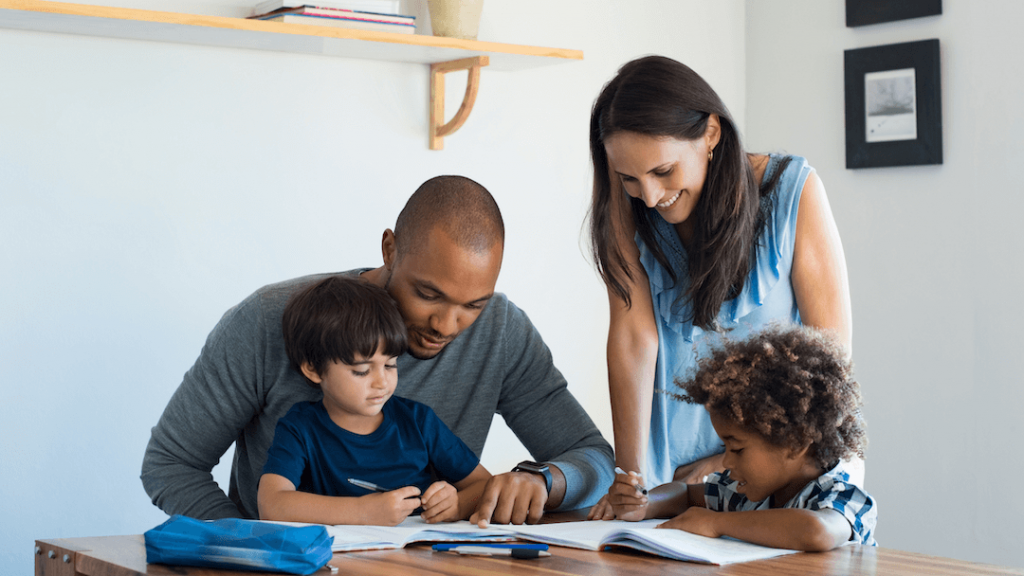Helicopter parenting — you know what it is, you’ve seen it in action, maybe you’ve even been a victim of helicopter parenting yourself if you grew up as a millennial. And if you have kids of your own, you probably mentally tell yourself that helicopter parenting — aka hovering, hovering, hovering and worrying, worrying, worrying over your kid — is a bad thing.

But not helicopter parenting can be easier said than done. After all, how do you just stop yourself from freaking out about everything that could potentially go wrong in your child’s life? Unfortunately, the knowledge that doing so could hurt your child more than help your child isn’t always enough to stop a concerned mom.
But, there is another way. Scaffold parenting is a step back from helicopter parenting and it may provide you with peace of mind, while giving your child the tools they need to not end up in those worrisome situations that you find yourself thinking up in the middle of the night.
What is Scaffold Parenting?
So what is scaffold parenting?

Put simply, within the boundaries of scaffold parenting, parents provide structure and support for their children, the scaffolding to their building, if you will. This support keeps children from tumbling into dangerous circumstances, but doesn’t smother them completely. And then, when the child has proven that they’re capable of standing upright on their own, the scaffolding is removed until the child needs it again.
Scaffold Parenting for Older Children
Going with the construction metaphors, you might provide a bit of scaffolding, aka support, to your child when they first leave the nest and go off to college. You might give gentle reminders about turning in assignments or might send them an article on the risks of STDs to hopefully prod them to visit their university’s health resources center to pick up some birth control. But when they’ve proven over a semester that they can get straight A’s, pay all their bills on time and not end up with an STD or unwanted pregnancy, you back off. The scaffolding is removed because the building can stand on its own.
In contrast, a helicopter parent might actually pay the child’s bills for them; buy the birth control for them and put it in their nightstand; and then call up the child’s professor to see how their child is performing in class (it seems ridiculous, but it happens more than you might think).
Scaffold Parenting for Younger Children
But what about scaffold parenting before your child leaves the nest? Can you scaffold parent your adolescent or toddler? Absolutely! It may be a little harder, but it can teach your child resilience and persistence.
As an example, say your toddler is learning a basic skill — like how to put together a toy made up of multiple parts. If you’re watching them play and they’re struggling and struggling and struggling, and getting upset as a result, you can step in and put the toy together for them, but that would be a form of helicopter parenting. You just fixed your child’s problem in order to make them happy, but they didn’t learn the basic skill they needed.
From a scaffolding standpoint, you could, instead, suggest your child try putting the pieces together a different way, or you could put two pieces together to show them how it’s done, and then take the pieces apart so they can fix the toy on their own. You’re providing that support, or scaffolding, but also allowing your child to learn things on their own, which will benefit them in the long run.
The Key to Scaffold Parenting
The key to scaffold parenting is to provide your child with the encouragement, structure and guidance they need to succeed. They should always know that they can come to you with issues, but they should also know that they can try things on their own without you rushing in to save the day. They should feel empowered, but still feel like you have their back.
Learn More About Scaffold Parenting
You can learn more about scaffold parenting — because like every child psychology concept or parenting tool, it’s always a lot more complex than it is on the surface level — through books like The Scaffold Effect: Raising Resilient, Self-Reliant and Secure Kids in an Age of Anxiety, as well as via various parenting and psychology publications, such as Psychology Today.

